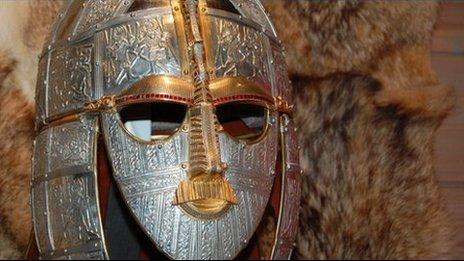Sutton Hoo: Anglo-Saxon king's ship sculpture created
- Published
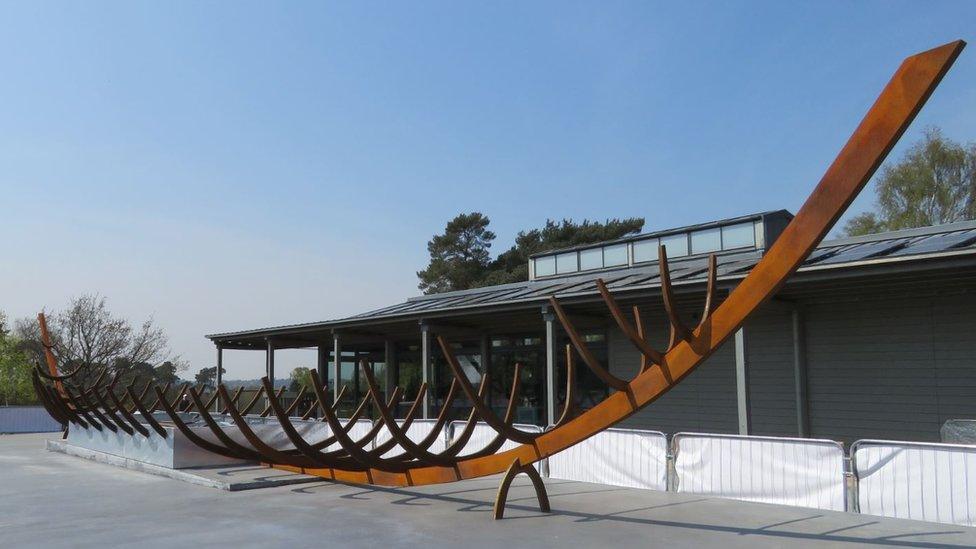
The rusted-steel sculpture is being seen by the public for the first time
A sculpture of an Anglo-Saxon ship buried in the Suffolk countryside has gone on show for the first time.
The remains of the original ship, thought to be the final resting place of the 7th-Century King Raedwald, were found at Sutton Hoo in Suffolk in 1939.
A full-size 27m (88ft) steel sculpture of it has been created at the Woodbridge site, which is part-way through a £4m regeneration project.
The National Trust said the ghostly representation was the "wow factor".
The specially-commissioned sculpture matches the size of the original ship and is on show in the courtyard of the Anglo-Saxon attraction, which has opened for the new year.
When it is fully complete, the sculpture will have a slab in the centre representing the king's burial chamber, with etchings marking where treasures in the chamber were found.
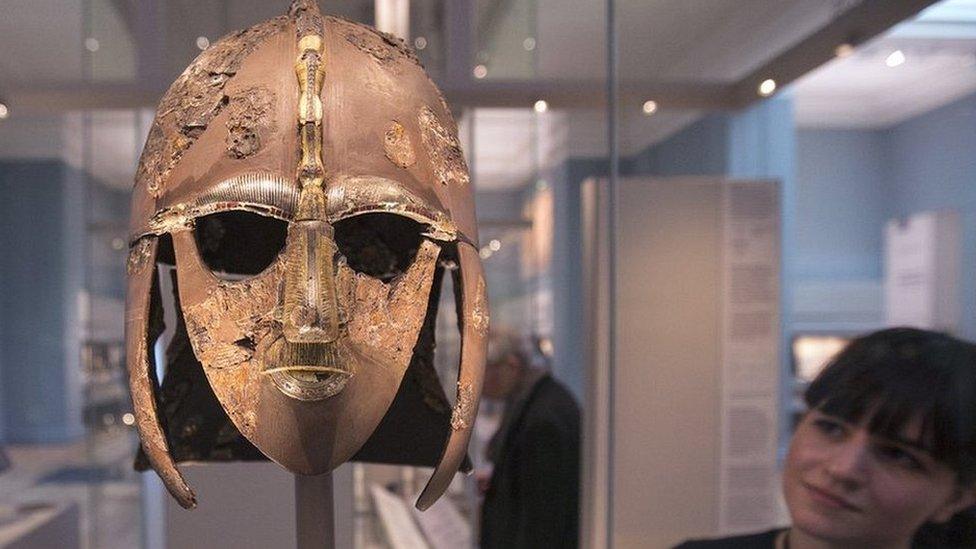
One of the greatest finds at the Sutton Hoo boat burial is this warrior's helmet, which is kept at the British Museum in London
The remains of the royal burial ship were first uncovered during a dig in 1939 when a single rivet was found.
During excavation "the ghostly skeleton of the ship was uncovered", the National Trust, which runs Sutton Hoo, said.
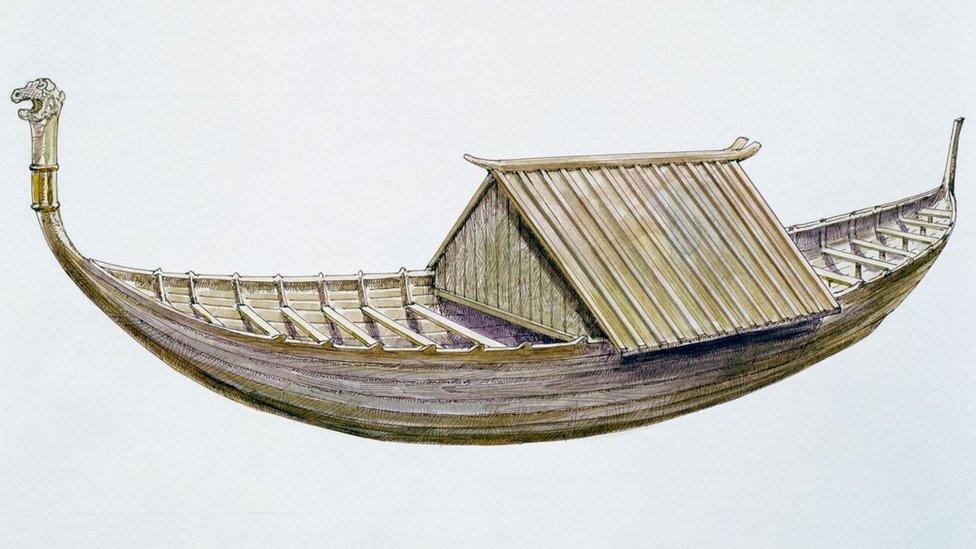
An artist's impression of the burial ship of the 7th Century King Raedwald of East Anglia
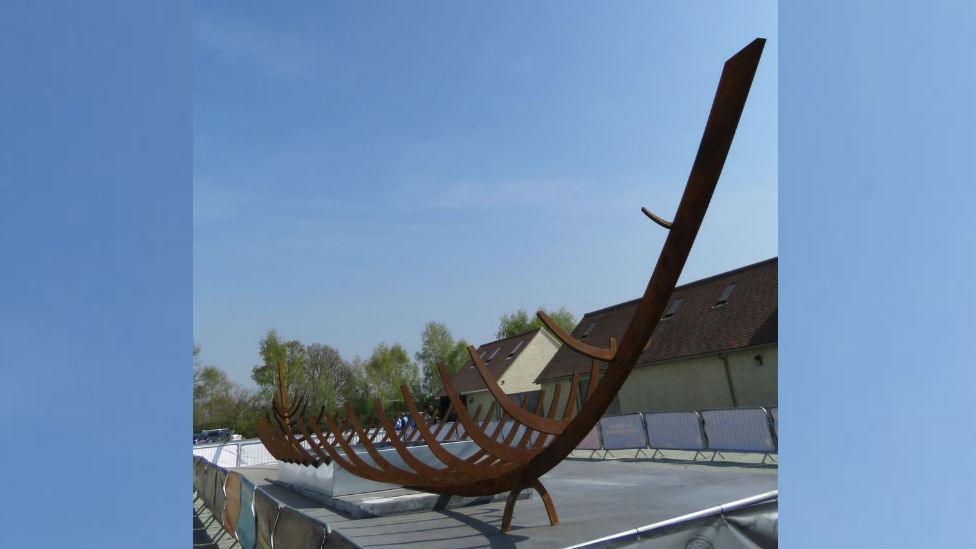
The sculpture is the same size as the original ship
The trust's project manager, Mike Hopwood, said the new rusted steel ship sculpture brought the "wow factor" to the site.
"To be met with a full-size ghostly representation of the ship found here will allow our visitors to begin to digest just how remarkable this story is," he added.
Allow X content?
This article contains content provided by X. We ask for your permission before anything is loaded, as they may be using cookies and other technologies. You may want to read X’s cookie policy, external and privacy policy, external before accepting. To view this content choose ‘accept and continue’.

Sutton Hoo's history

It is thought the original ship was hauled to the Sutton Hoo site from the nearby River Deben
The discovery was made in 1939 when landowner Edith Pretty asked archaeologist Basil Brown to investigate the largest of several mounds on her property
Among the many finds were the buried boat which contained the remains of a warrior's helmet, which is kept in the British Museum
It is thought the ship was hauled to the site from the nearby River Deben

- Published6 October 2018

- Published7 April 2018
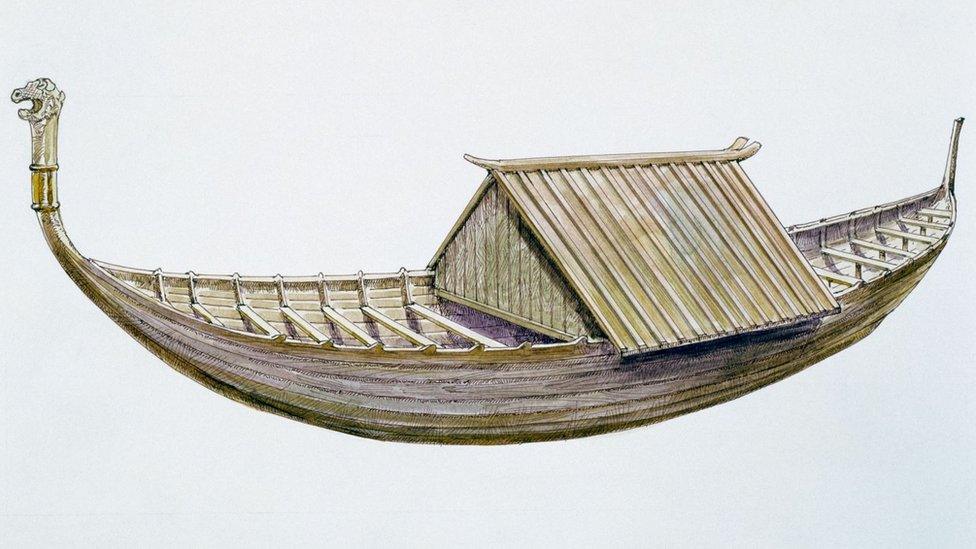
- Published19 November 2015
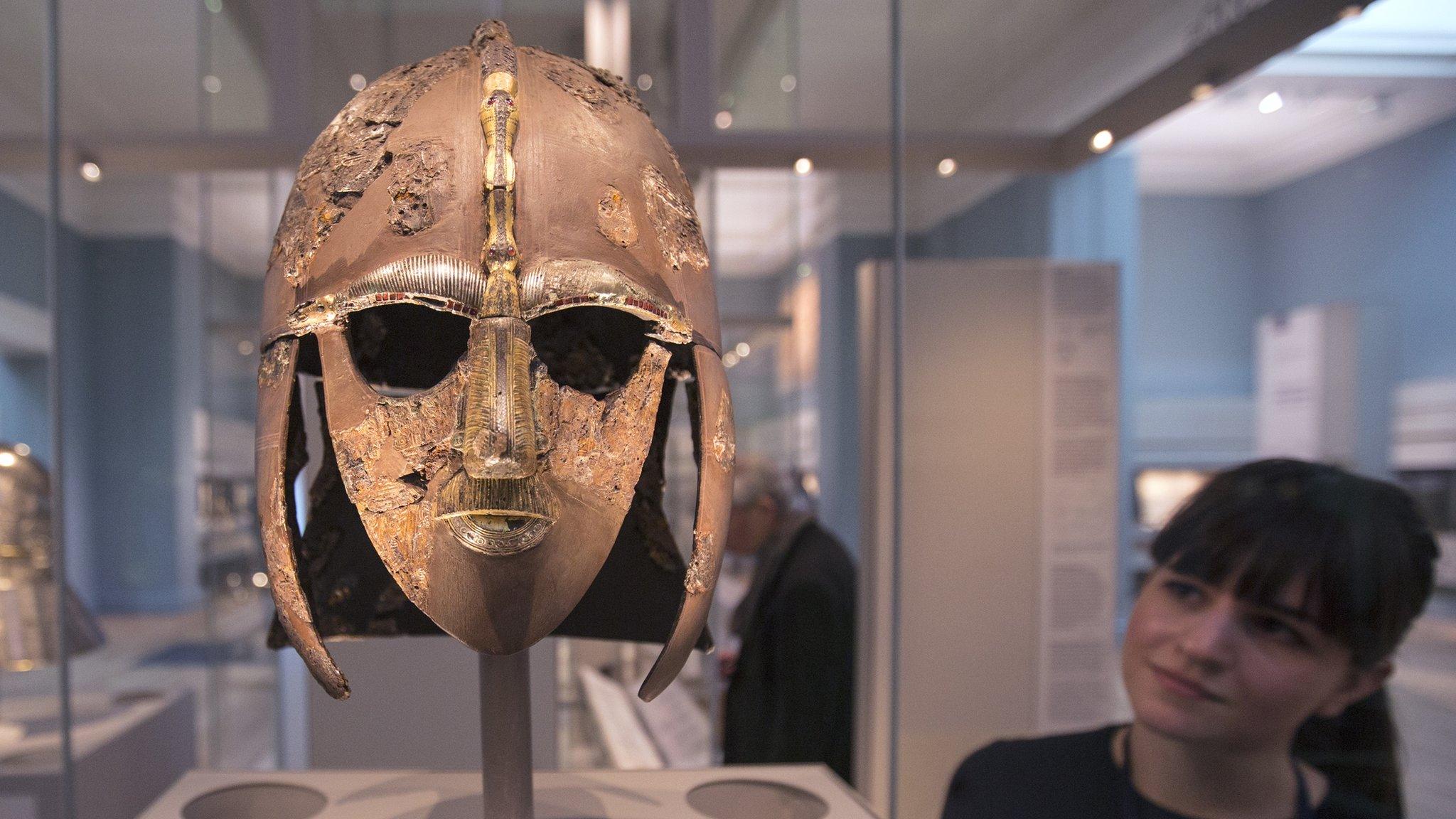
- Published10 March 2014
